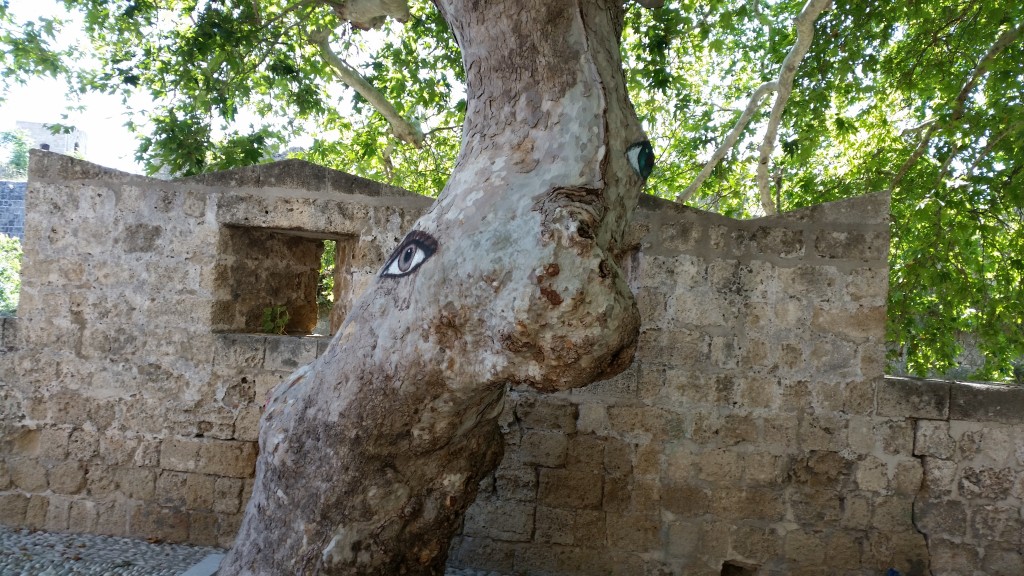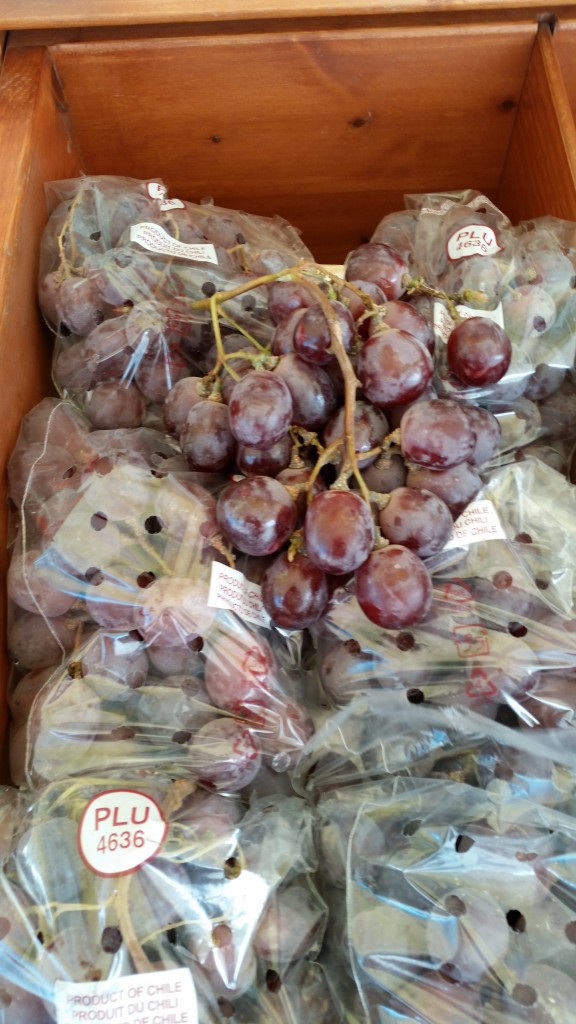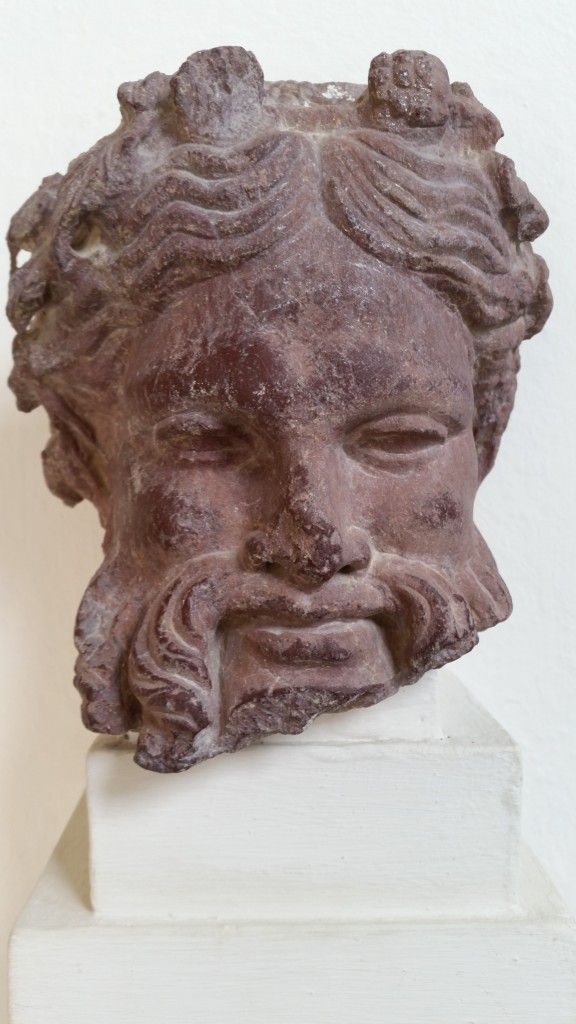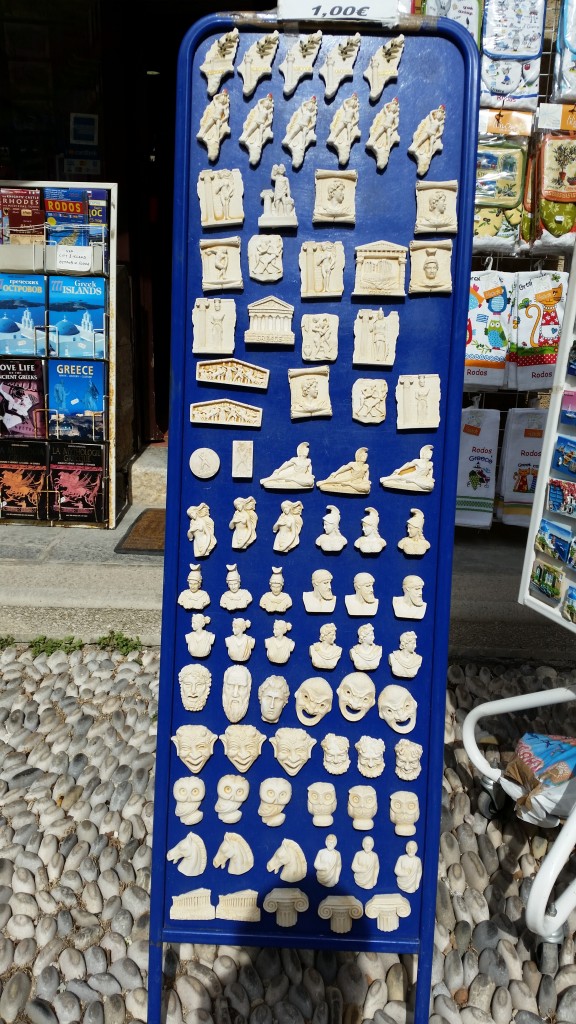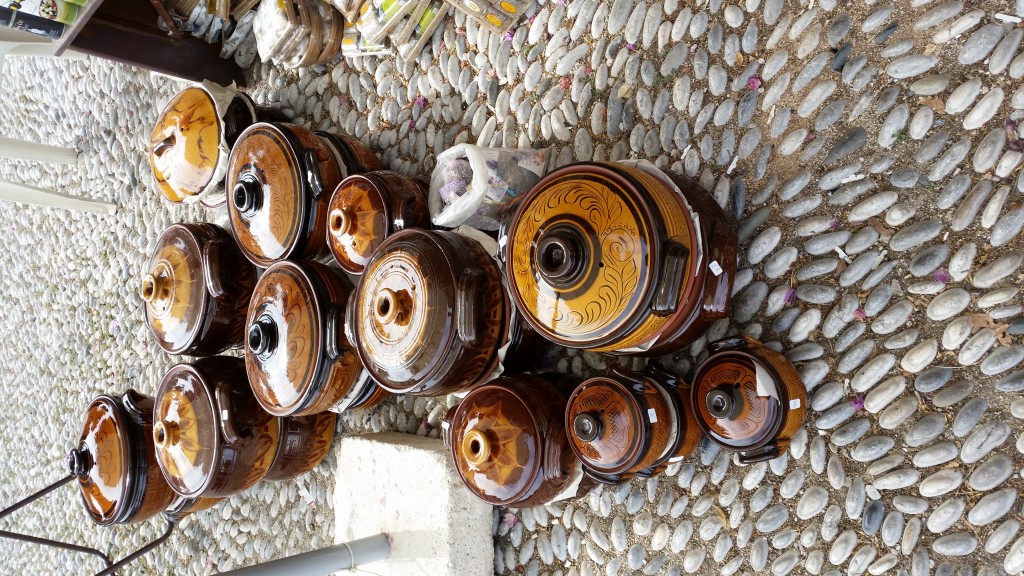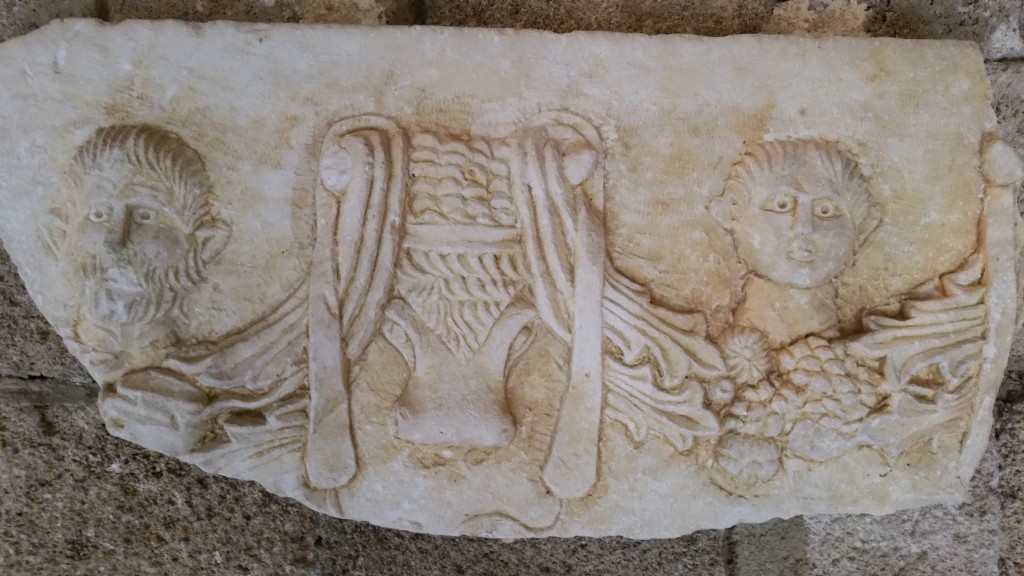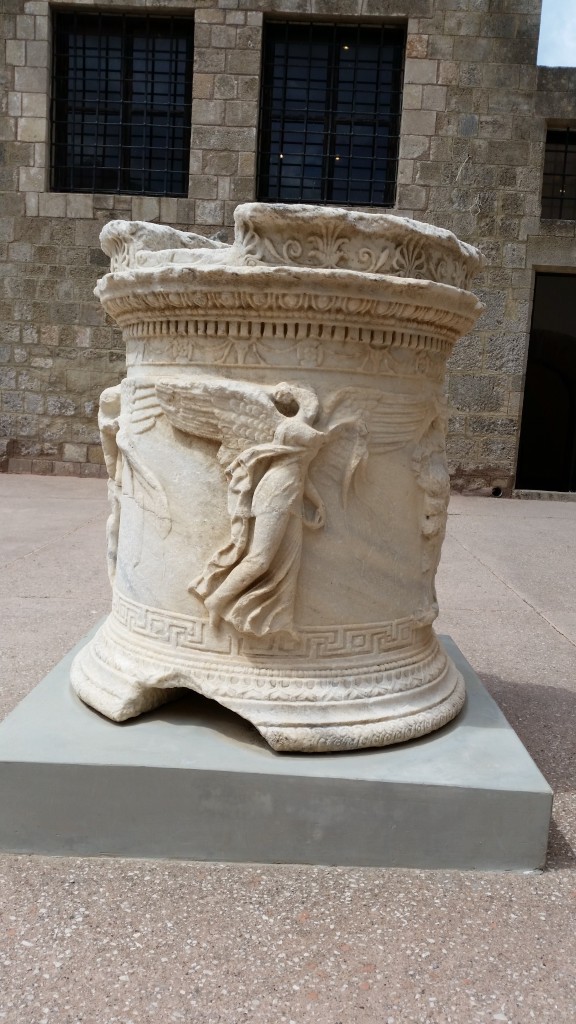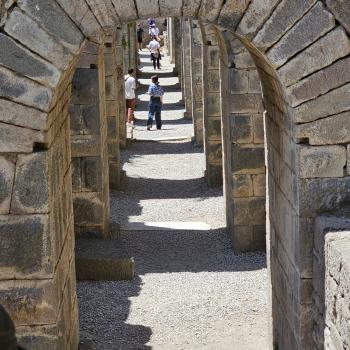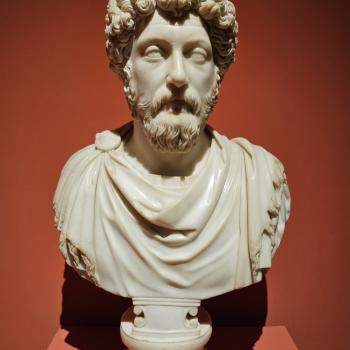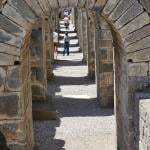There are two decent museums in the old city in Rhodes, one in the former palace, one in the former St. John’s Hospital. We will explore a few of the things there. What they reveal is that there was a very high level of culture on this island and considerable wealth (those two things often go together). This was no Gilligan’s island. On the way to the museums you have to run the gauntlet of the vendors, so how about some grapes (not of wrath– they are huge, no wonder Bacchus in the museum looks so sotted), but we will pass on the faux Greek pots and refrigerator magnets, and it is definitely too early in the morning for that chewy ice cream known as dondurma…
Undoubtedly the most famous work of art in either of these museums is the Rhodes Aphrodite from the early Roman period. We saw the Aphrodite temple in a previous post, and she was the favorite deity of this island. Unfortunately this statue is poorly displayed, with lots of back lighting issues.
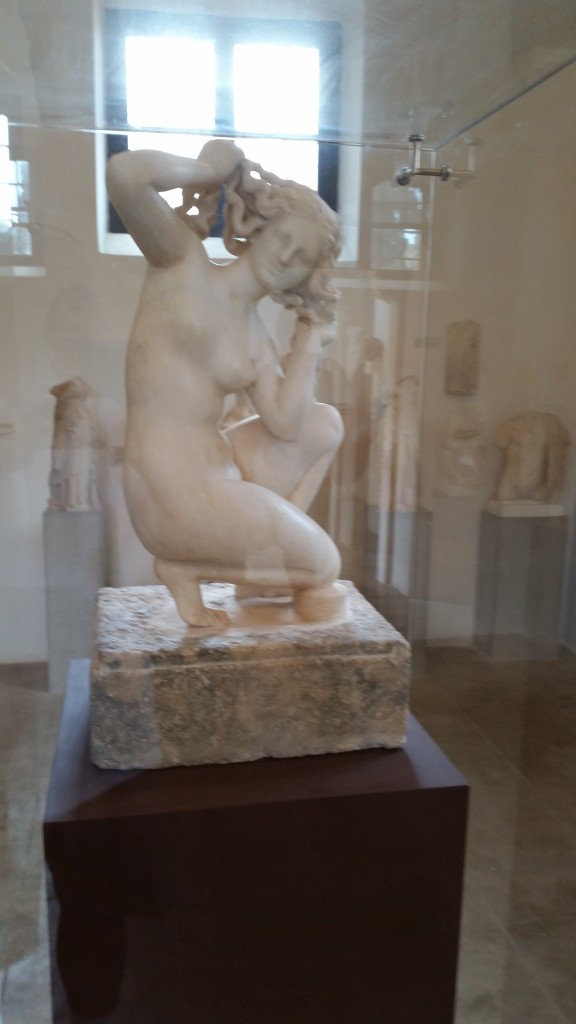 These sorts of statues adorned wealthy homes, or fountains. Here is another statue of Aphrodite, found in the sea off Rhodes, hence some of the features have been smoothed away. I call this one ‘a Farewell to Arms’.
These sorts of statues adorned wealthy homes, or fountains. Here is another statue of Aphrodite, found in the sea off Rhodes, hence some of the features have been smoothed away. I call this one ‘a Farewell to Arms’.
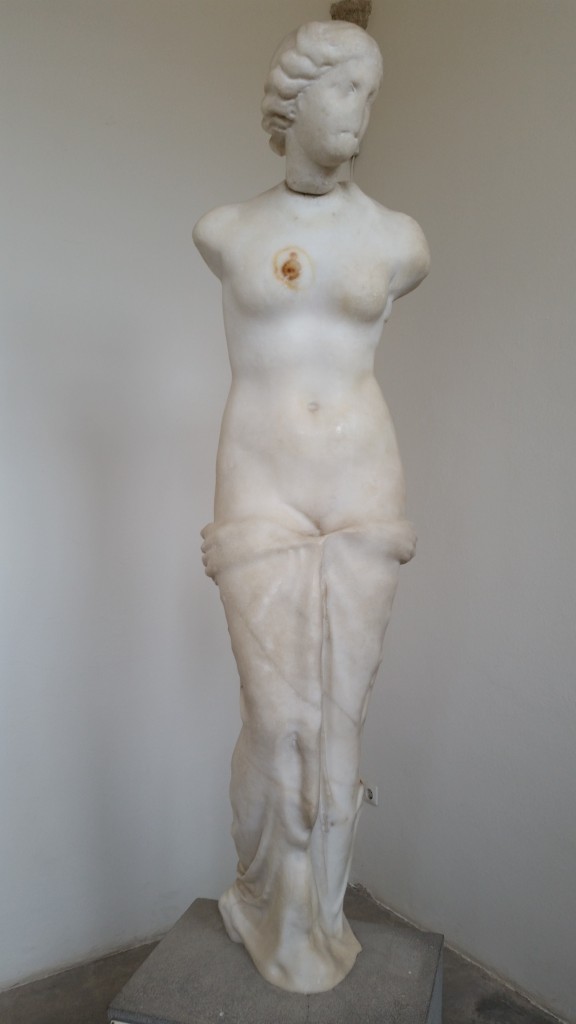
The major things these museums have are: 1) ancient glass of various sorts; 2) funerary art; 3) mosaic floors. We shall look at each in turn.

These are alabastrons, little vials in which one would put perfumes of some sort, sometimes very expensive perfume like pistic nard (used by Mary of Bethany in the Gospel story to anoint Jesus). Perfume served, among other things, as the ancient equivalent to deodorant, to cover the normal body odor.
The collection of funerary steles is considerable and impressive. You can learn a lot about a culture’s religion and afterlife beliefs (and the fact that humans are inherently religion, the only ones who have burial rites).
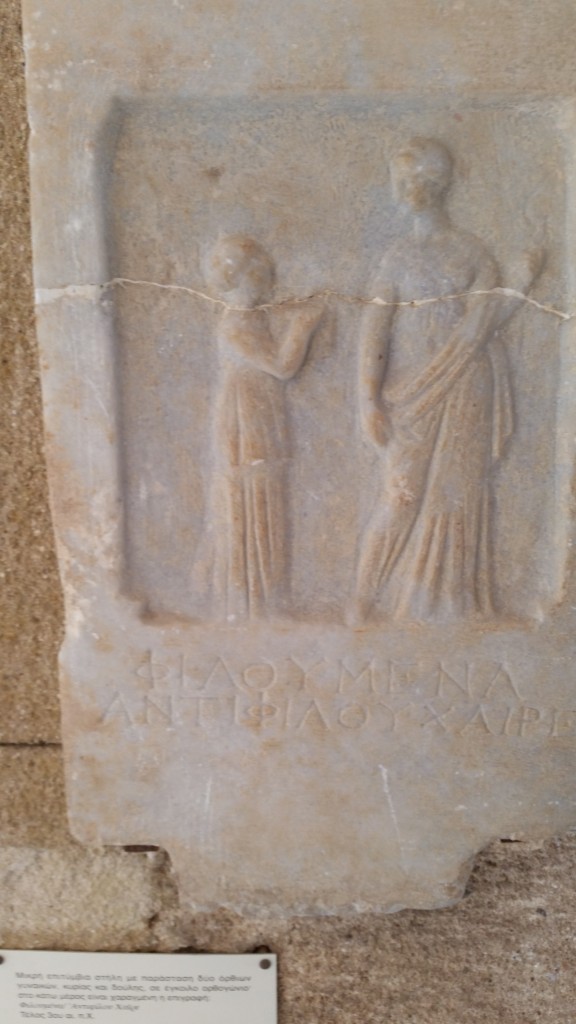
Here you see a woman named Philoumena, with her servant holding up a jewelry box to her. The Greek inscription says beloved Philoumena, farewell. Sometimes we hear the erroneous remark that because marriages were all arranged in antiquity, there was little love involved. The funerary steles often tell a different story.

Here is a very similar stele to the one above, once again a woman has died, and her slave is holding her jewelry box. With this one comes the inscription as follows…
“If there is highest praise in the world for a woman,with this died Kalliarista…for wisdom and virtue. For this reason her husband, Damocles, set up this stele as a memorial of love; and may a benevolent spirit follow him for the rest of his life.” (dated mid-4th century B.C.).
Even more moving is the very artistry of this grave stele…
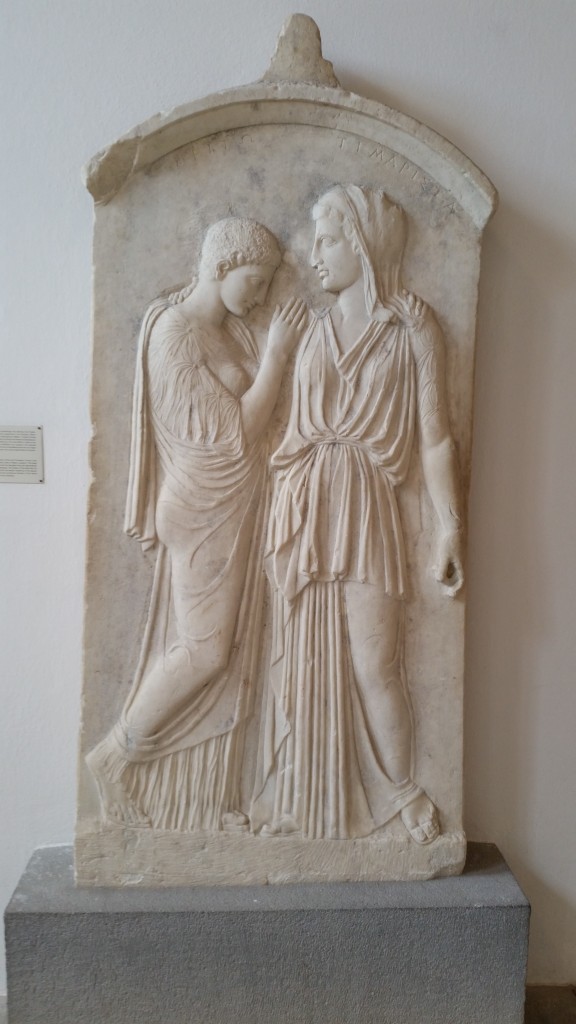
Here is a mother and young daughter, Krito and Timarista, tenderly embracing. The daughter does not want the mother to leave her, but she has died. Again this is funerary art from before the NT era.
Here’s one more presumably with a father (named Peisistratos) and apparently his oldest son who has ‘taken the toga’ (i.e. come of age), and a small child, and yes, the family dog as well. These scenes on the funerary stele are often vivid, and touching, giving a clue about the family and its values and love.

Unfortunately, a lot of the marble statuary and mosaics are outside in courtyards and gardens, and in some cases in direct sunlight, and so are gradually deteriorating. This is a dilemma faced at many museums with limited space.

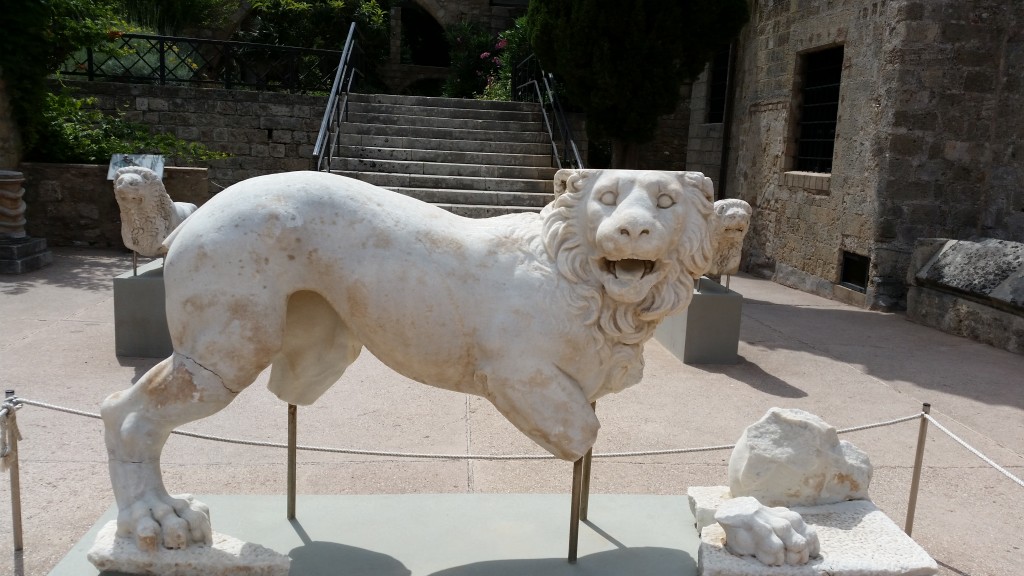
Here’s a constant motif on Rhodes— dolphins. You see them in various art forms. They must have been plentiful around this island in antiquity. We did not see any on our voyage.
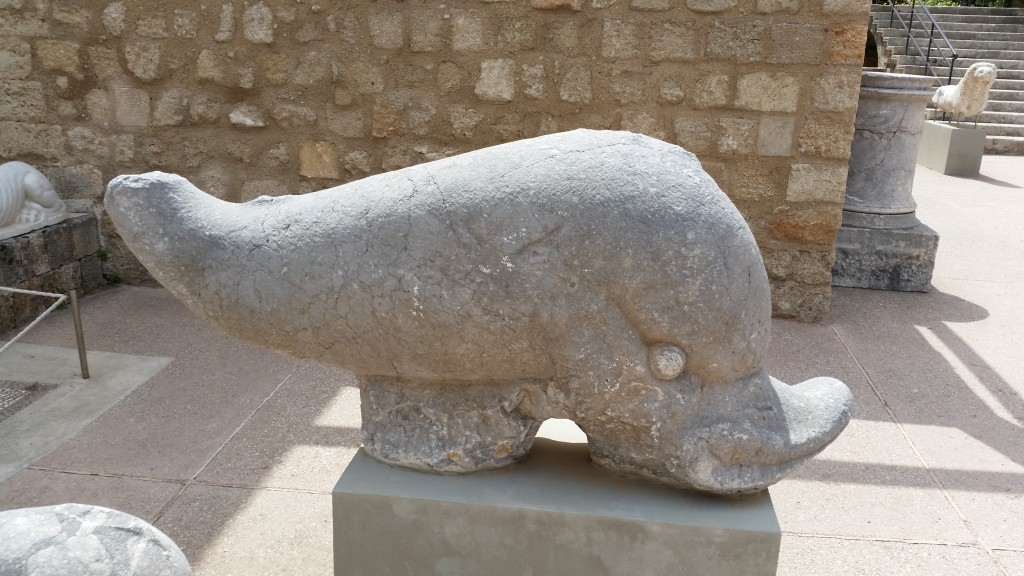
Here’s Apollo’s python wrapped around a column. There was a temple of Apollo (the god of prophecy) on Rhodes.
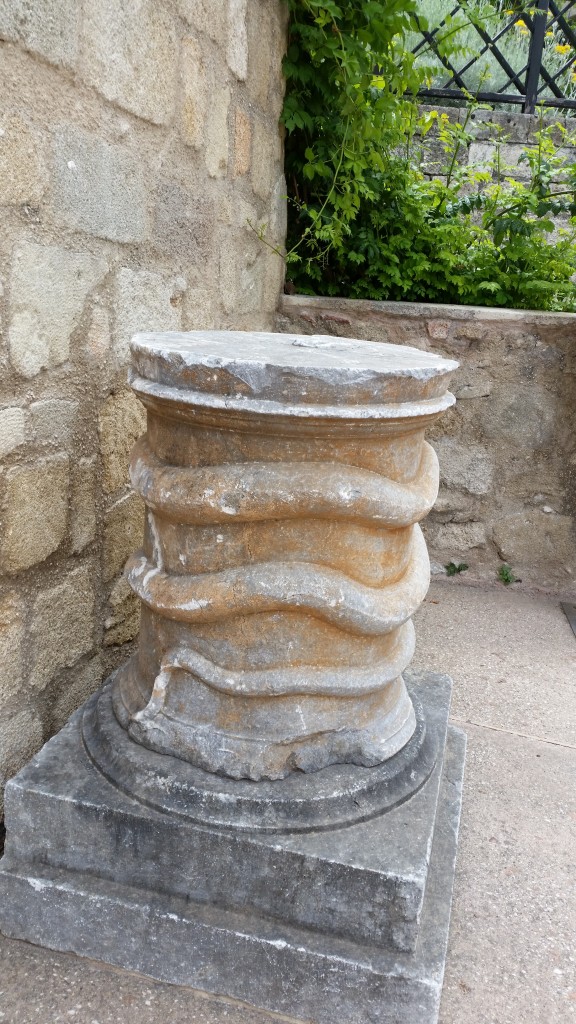
Here’s a bone box with two likely lads on it…. how did these guys get on a major ossuary..
These sorts of ossuaries were produced in western Cilicia (Paul’s native region) in the Amaxia and Sydroi workshop during the NT era.
Did the ancients believe in angels and demons, yes they mostly did.
There are much more recent artifacts as well from the period of the Rhodes knights, and even later the Italians.
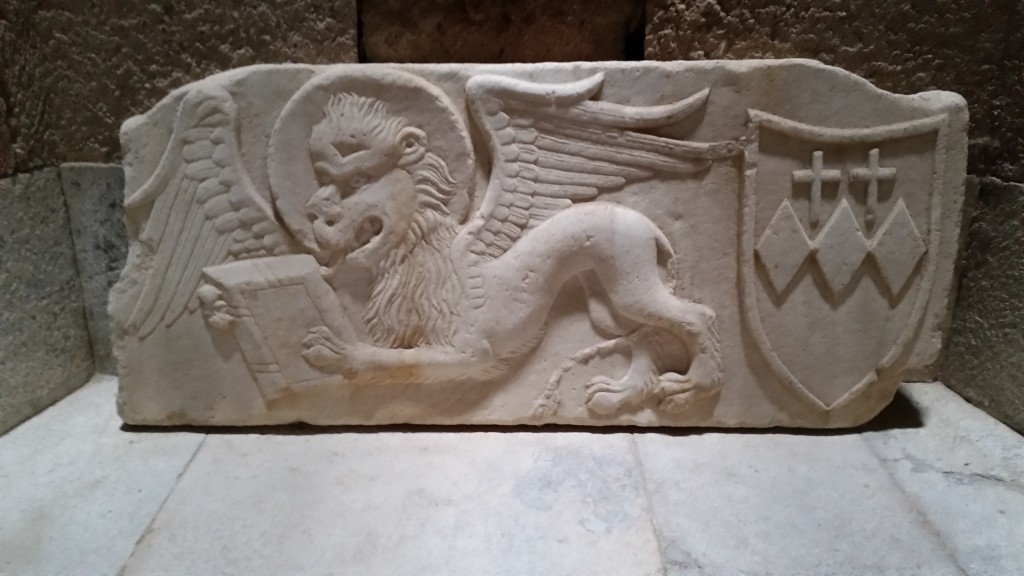
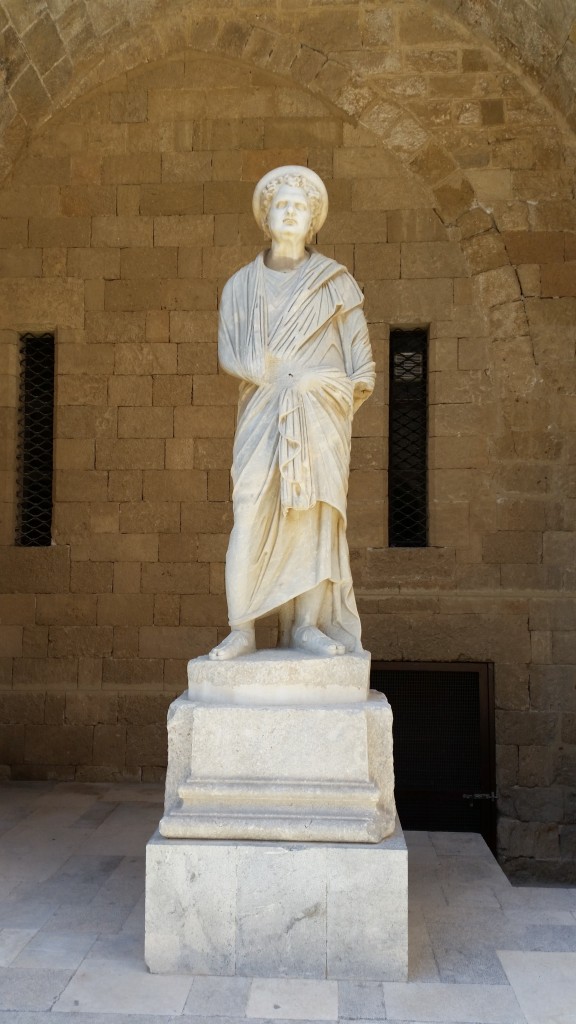
Here’s a mosaic courtyard with votive statue in a niche…
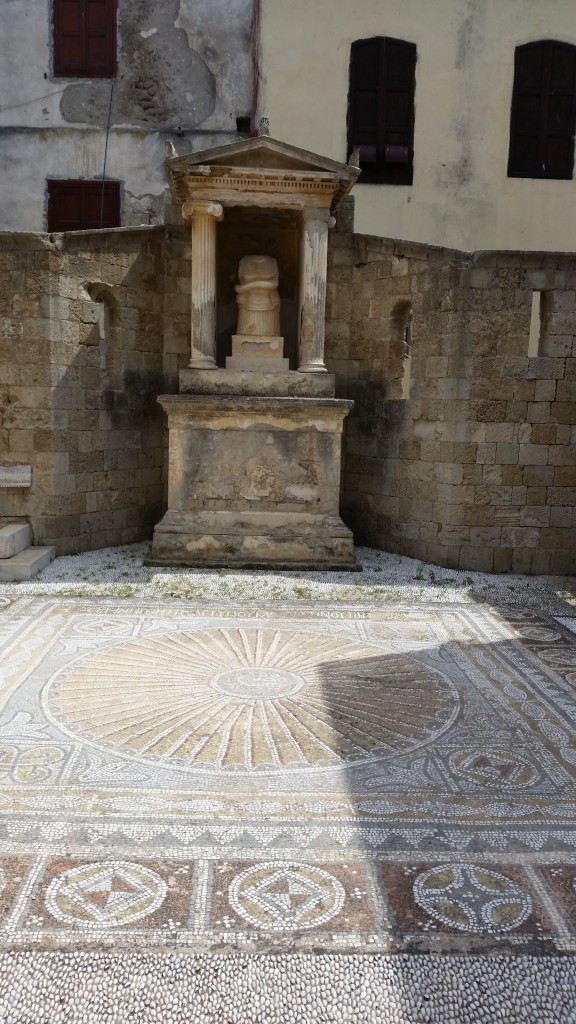
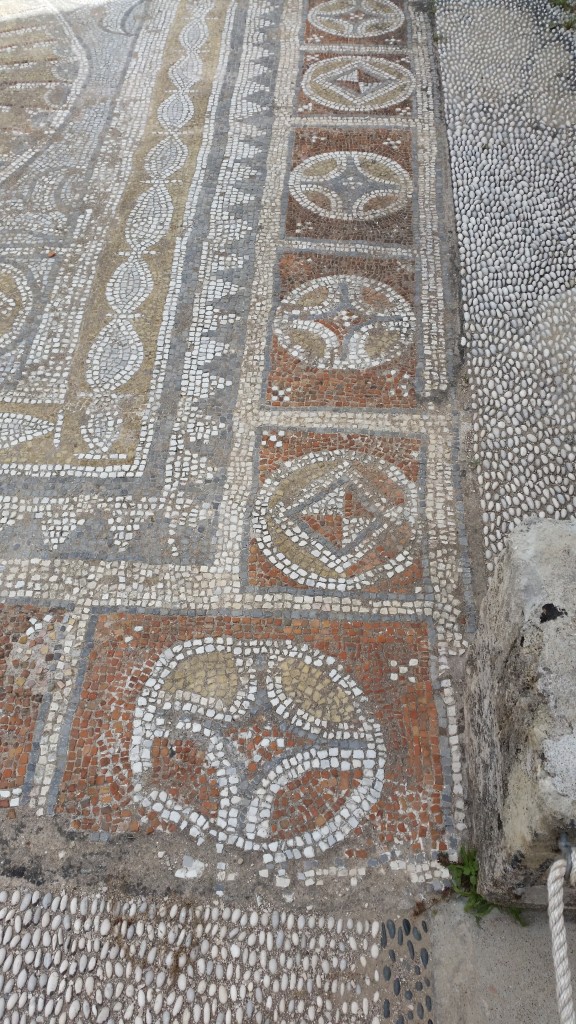
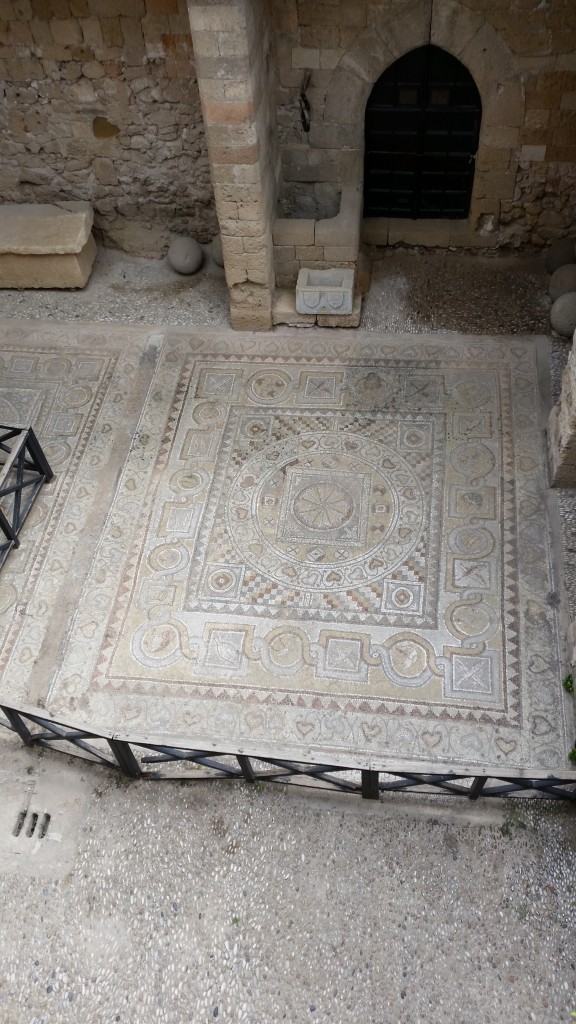
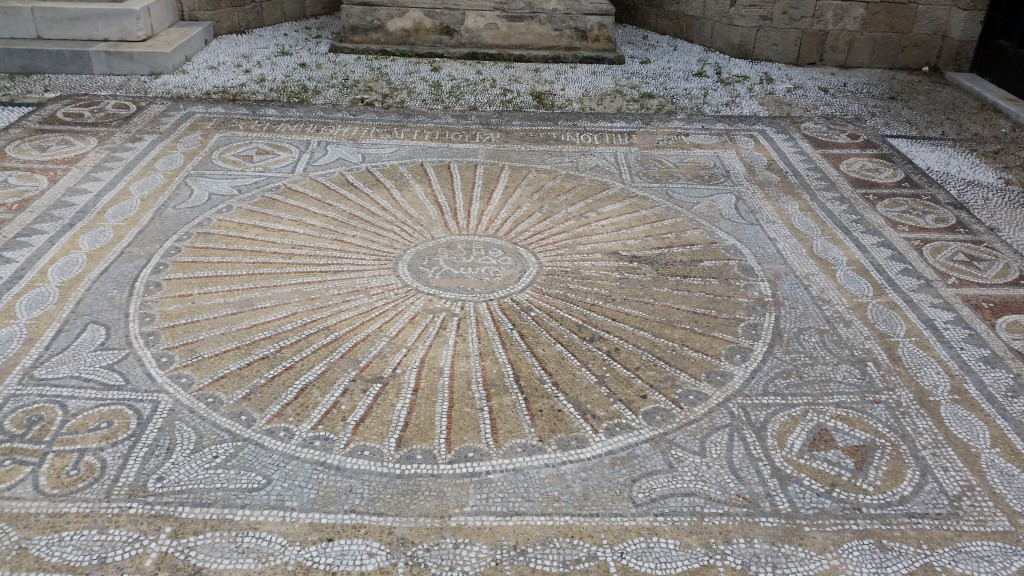
Here are two of the nicer indoor mosaics…
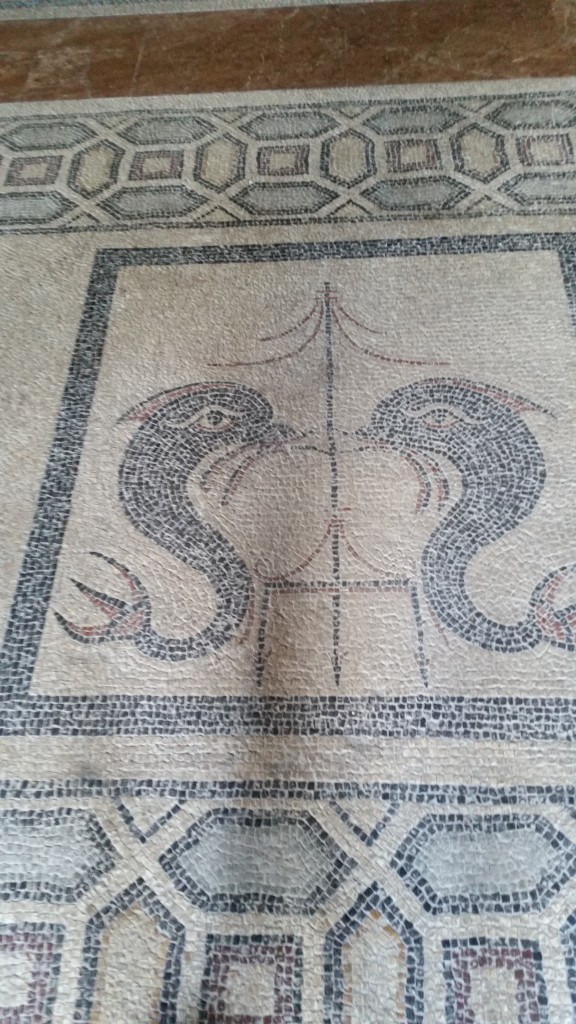
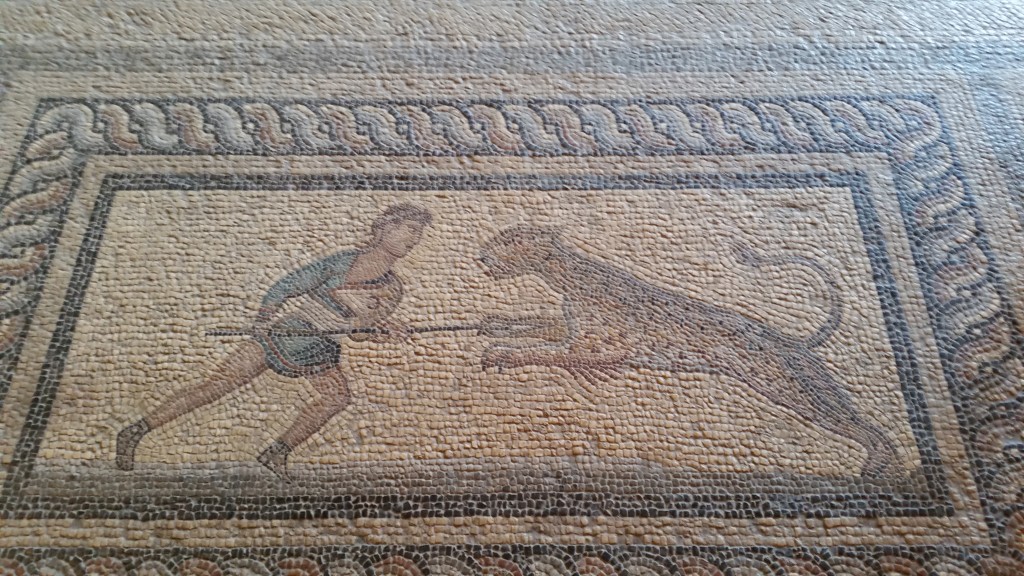
Last but definitely not least are the gigantic mosaics from a Rhodian villa now hanging horizontally on a wall in the museum garden! Here’s a description.
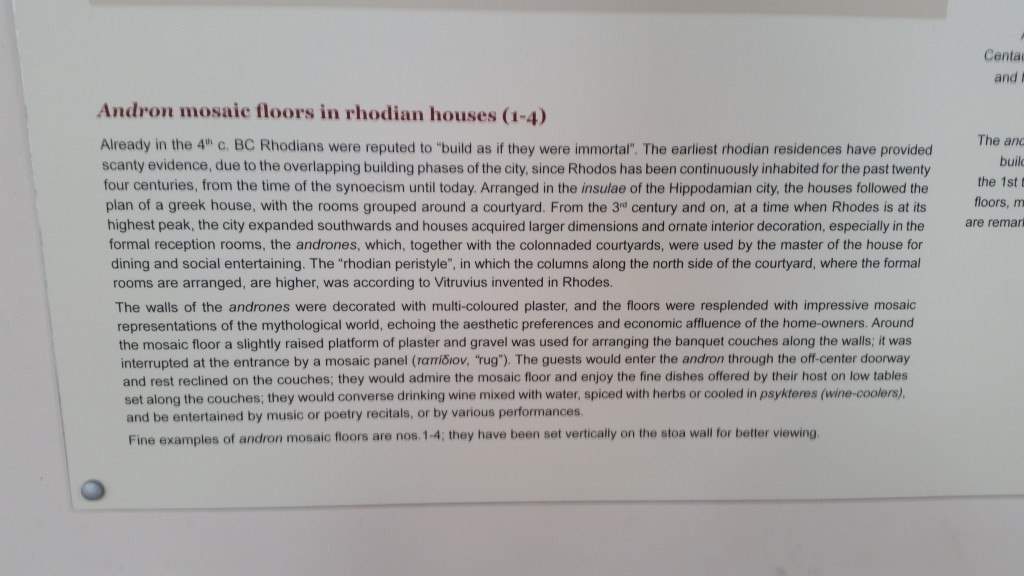
The representations are of some of fabulous beasts of mythology— the centaurs, the griffin dragons, Bellerophon, the mythical hero of Corinth, and so on.
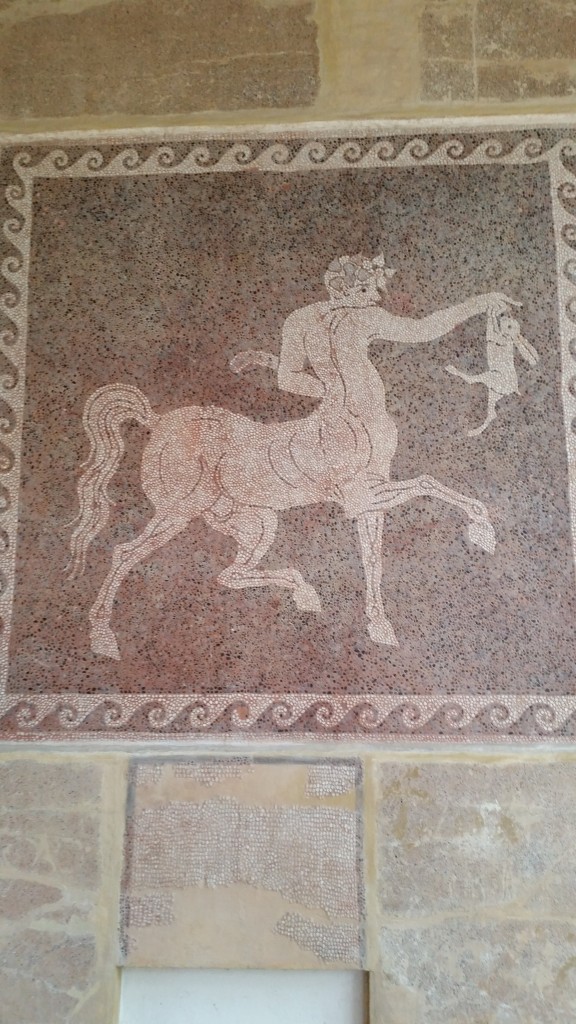
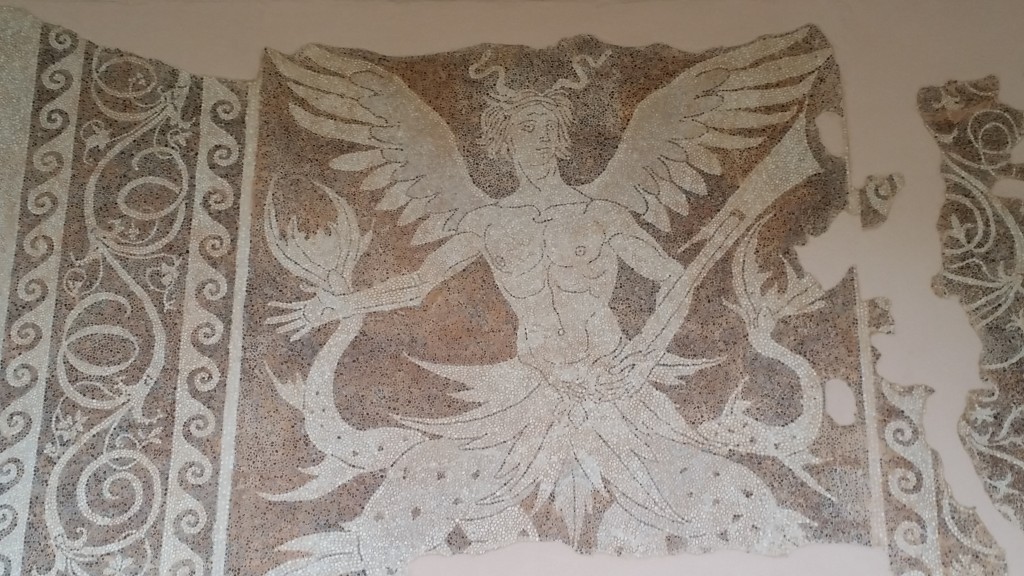
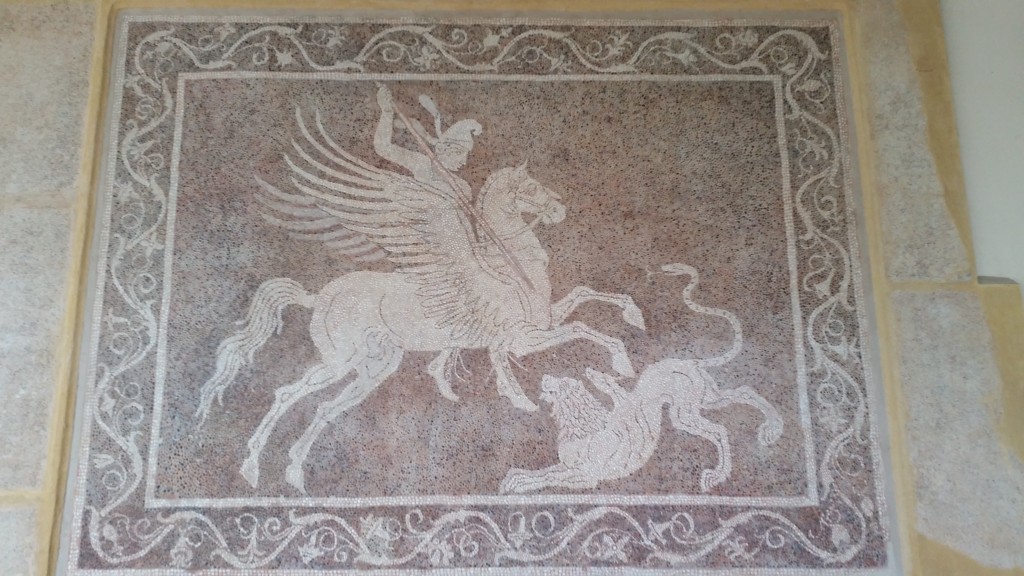
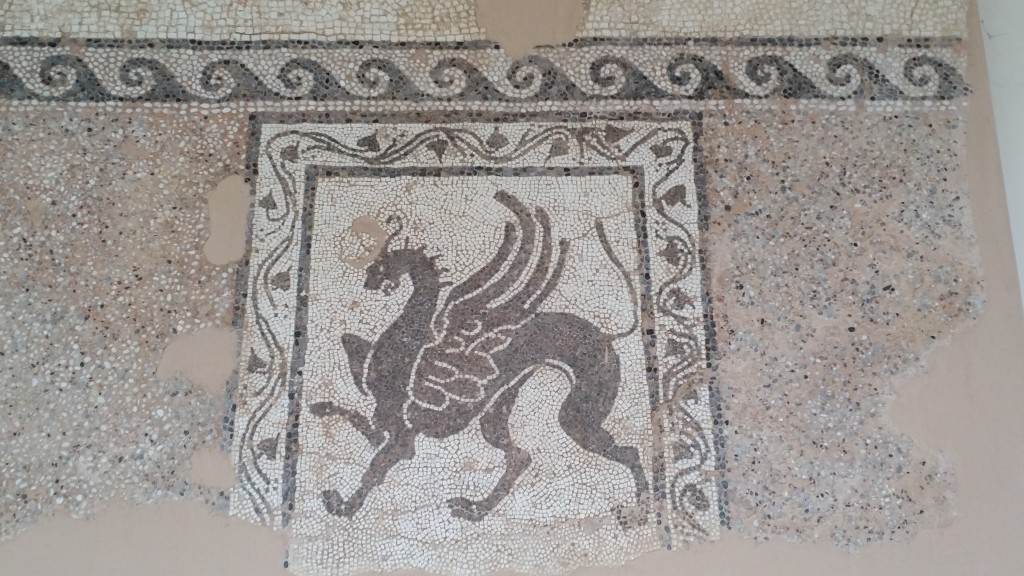
And if all that was not scary enough (imagine getting up bleary eyed in the morning and walking across that floor on the way to breakfast, it’s enough to put you off of your feed), you can walk outside the museum and see a tree that has morphed into a camel– a true mythological creature!
